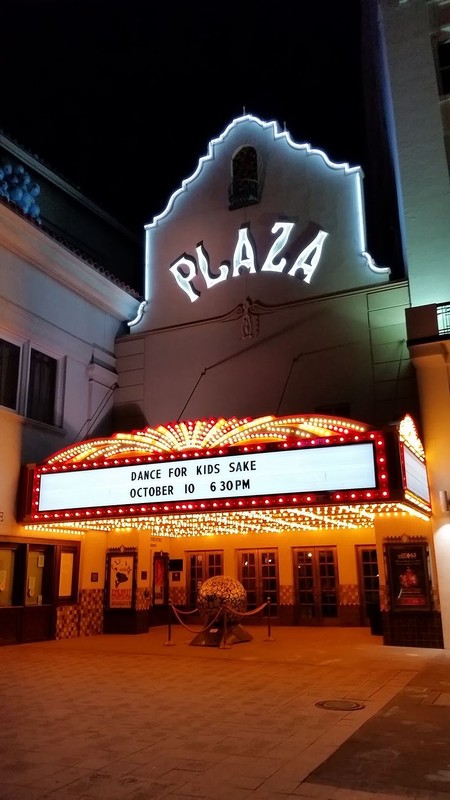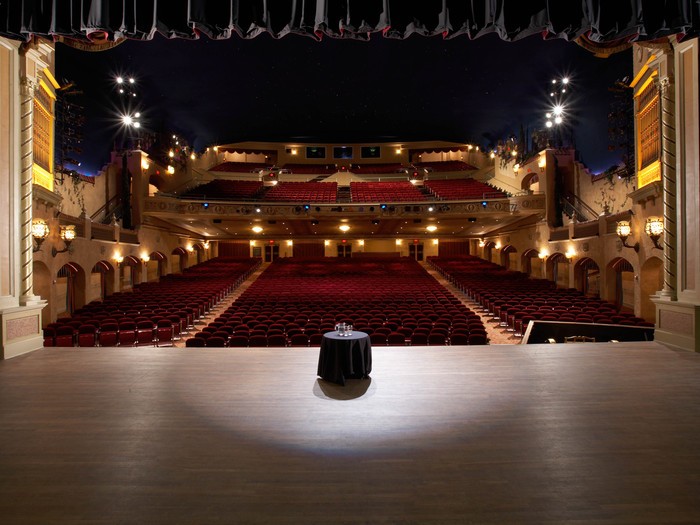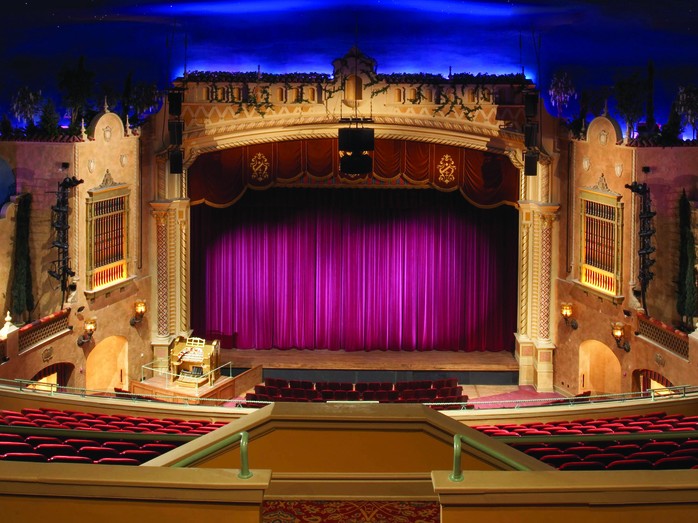Plaza Theatre
Introduction
Text-to-speech Audio
Images
The main entrance to the Plaza.

The main theater hall features 2,050 seats.

The stars on the ceiling accurately represent the Southwestern sky in June.

Backstory and Context
Text-to-speech Audio
Since buildings already existed in the block where the Plaza Theatre now stands, Dunne designed the theater to fit the space, which is why it is not possible to see the rest of the building from the main entrance. The Plaza officially opened on September 12, 1930 and was initially meant to be a luxurious vaudeville house, where both vaudeville acts performed and films were shown. At the time of its construction, the theater was equipped with the latest technology available including a large 1,071 pipe-Mighty Wurlitzer Blaban III Organ, which is one of only six in existence (it was removed in the 1970s but reinstalled in 1998).
The Plaza remained popular until the 1960s. By that time, drive-in theaters, televisions, and the rise of suburban neighborhoods around El Paso had drawn customers away. As a result, the Plaza started to fall into disrepair. The organ and many other items in the theater were sold at auction in the 1970s. However, a local family bought the building in 1973, saving it from demolition. It reopened in the 1980s but closed again in 1989. Under threat of demolition once more, the El Paso Community Foundation bought it in 1989 and donated it to the city the next year. The Foundation and the city restored the the theater in the early 2000s. It reopened in 2006.
Sources
Flory, Linda C. "Plaza Theatre." National Park Service - National Register of Historic Places Nomination Form. June 4, 1987. https://catalog.archives.gov/OpaAPI/media/40971885/content/electronic-records/rg-079/NPS_TX/87000902.pdf.
Metz, Leon. El Paso: Guided Through Time. El Paso, Texas: Mangan Books, 1999. pp. 56–58.
"Plaza Theatre." ElPasoLive.com. Accessed September 19, 2019. http://elpasolive.com/venues/plaza_theatre.
Wikimedia Commons
El Paso Live
El Paso Live
